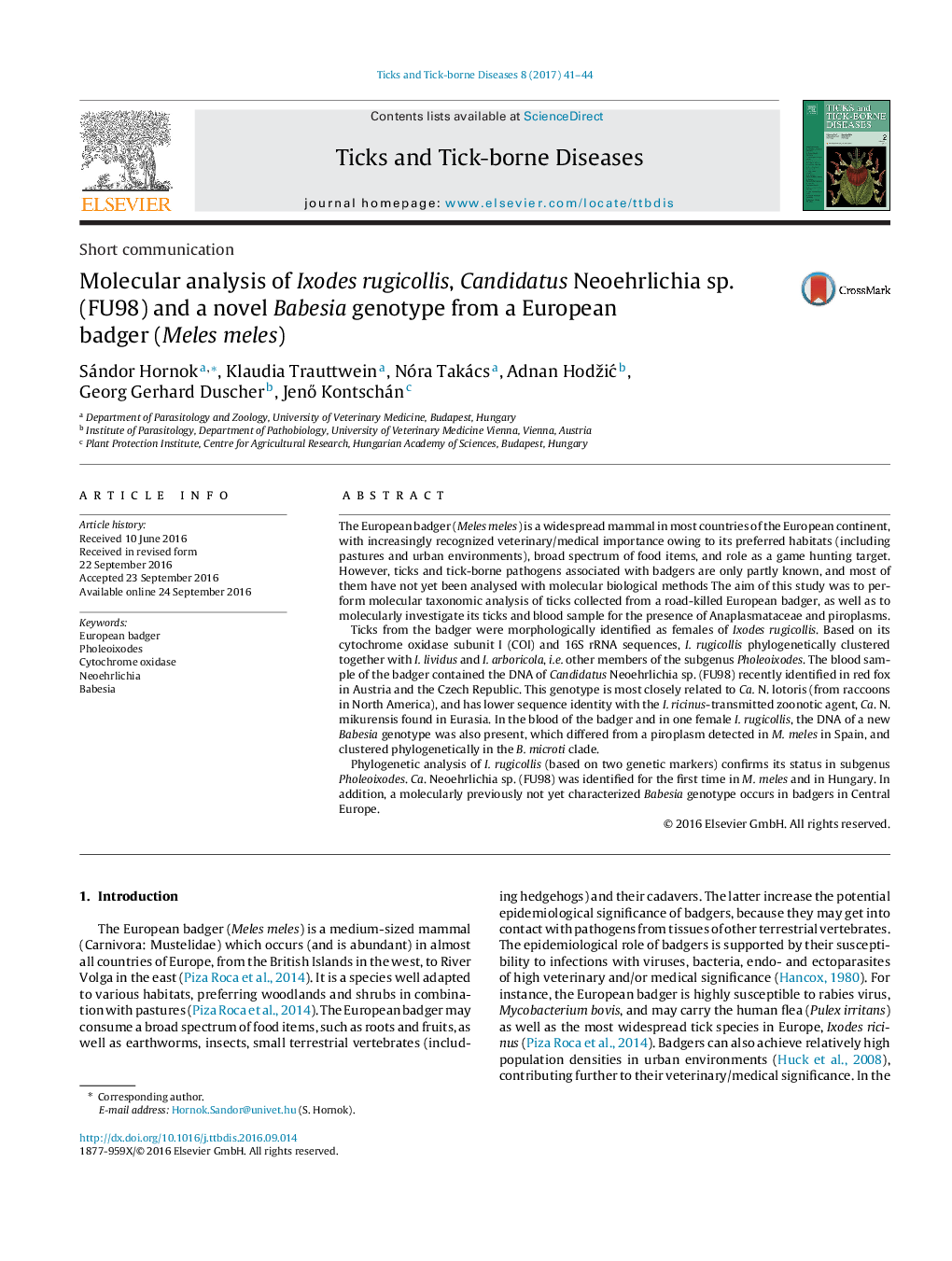| کد مقاله | کد نشریه | سال انتشار | مقاله انگلیسی | نسخه تمام متن |
|---|---|---|---|---|
| 5546443 | 1402743 | 2017 | 4 صفحه PDF | دانلود رایگان |

The European badger (Meles meles) is a widespread mammal in most countries of the European continent, with increasingly recognized veterinary/medical importance owing to its preferred habitats (including pastures and urban environments), broad spectrum of food items, and role as a game hunting target. However, ticks and tick-borne pathogens associated with badgers are only partly known, and most of them have not yet been analysed with molecular biological methods The aim of this study was to perform molecular taxonomic analysis of ticks collected from a road-killed European badger, as well as to molecularly investigate its ticks and blood sample for the presence of Anaplasmataceae and piroplasms.Ticks from the badger were morphologically identified as females of Ixodes rugicollis. Based on its cytochrome oxidase subunit I (COI) and 16S rRNA sequences, I. rugicollis phylogenetically clustered together with I. lividus and I. arboricola, i.e. other members of the subgenus Pholeoixodes. The blood sample of the badger contained the DNA of Candidatus Neoehrlichia sp. (FU98) recently identified in red fox in Austria and the Czech Republic. This genotype is most closely related to Ca. N. lotoris (from raccoons in North America), and has lower sequence identity with the I. ricinus-transmitted zoonotic agent, Ca. N. mikurensis found in Eurasia. In the blood of the badger and in one female I. rugicollis, the DNA of a new Babesia genotype was also present, which differed from a piroplasm detected in M. meles in Spain, and clustered phylogenetically in the B. microti clade.Phylogenetic analysis of I. rugicollis (based on two genetic markers) confirms its status in subgenus Pholeoixodes. Ca. Neoehrlichia sp. (FU98) was identified for the first time in M. meles and in Hungary. In addition, a molecularly previously not yet characterized Babesia genotype occurs in badgers in Central Europe.
Journal: Ticks and Tick-borne Diseases - Volume 8, Issue 1, January 2017, Pages 41-44